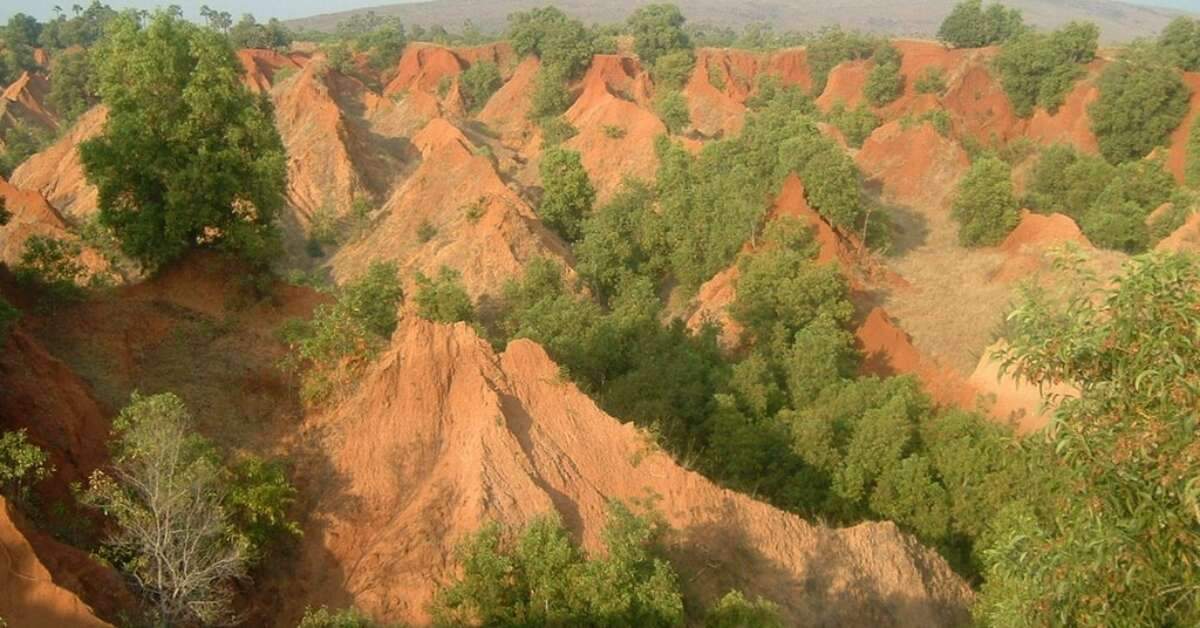

On 15 July 2024, videos of Erra Matti Dibbalu swept social media, prompting public dialogue about the need to preserve the site. The videos, showing bulldozers excavating Plot no 118 of the Erra Matti Dibbalu, incited concern from local communities – a well-warranted public outcry. After all, as the only Nationally recognised Geo-heritage site in Visakhapatnam, and one of four unique geo-heritage sites from Andhra Pradesh, Erra Matti Dibbalu is beyond valuable to the culture and heritage of our city, and India too! But what makes the Erra Matti Dibbalu such a treasured site, and a rarity in nature? Here are 3 reasons that make it stand out:
1. Their unique formation
The most fascinating thing about Erra Matti Dibbalu is its deeply gullied red sand dunes and their formation. Generally, a gully refers to a deep valley formed when water runs across the land and wears it away. In this case, the action of wind and sea-water over the Earth gave Erra Matti Dibbalu its characteristic gullied appearance.
Another distinctive feature of Erra Matti Dibbalu, its red colour, can be attributed to a process called ferrogination, wherein an iron-rich material called haemitite covered the loose sand grains, became oxidized after exposure to water, sun, and air, giving the sand its red hue.
Today, the gullied Erra Matti Dibbalu comprises a mixture of sand and oxidised silt and clay.
Such formations are extremely rare, with similar sand deposits reported only in three places across South Asia’s tropical regions: the Teri sands in Tamil Nadu, the Erra Matti Dibbalu in Visakhapatnam, and another site in Sri Lanka. These formations are absent in equatorial and temperate regions due to a complex interplay of scientific factors.
2. They are as old as time
The Erra Matti Dibbalu also stand apart for being as old as 1.8 million years (Pleistocene Epoch or Ice age), according to some scientists. Others opine that the current form of Erra Matti Dibbalu was conceived around 12,000 years ago. While there are many theories floating around about this geological site, these sediments are old and crucial for understanding past global climatic changes, sea-level variations, and monsoonal patterns.
3. A glimpse into the past of mankind
Erra Matti Dibbalu is also of significant archaeological interest. Excavations in the compact sand have revealed artefacts indicating human habitation during the Late Pleistocene Epoch. The region has yielded stone tools from three distinct periods and pottery from the Neolithic and Mesolithic eras, suggesting continuous human activity over thousands of years.
Given these geological and archaeological factors, Erra Matti Dibbalu is undeniably one of the most unique things about Visakhapatnam. Today, as threats like urbanisation, plastic pollution, and more loom over the land, our efforts to preserve it must only grow.
Stay tuned to Yo! Vizag website and Instagram for more city news updates.
This post was last modified on 17/07/2024 5:43 pm
Works for the much-anticipated metro rail project in Visakhapatnam is set to begin with a…
In a progressive move towards integrating emerging technologies into higher education, Andhra University (AU) has…
Life can be unpredictable, like the weather in our city! While the mornings and afternoons…
There are places in the world where spotting your doppelganger isn’t a once-in-a-lifetime event, it’s…
Plans are underway to launch a Vande Bharat Express connecting Vijayawada and Bengaluru. The Indian…
In a significant counter-terrorism operation, Vizianagaram police have arrested two alleged terrorists hailing from Vizianagaram…
Leave a Comment